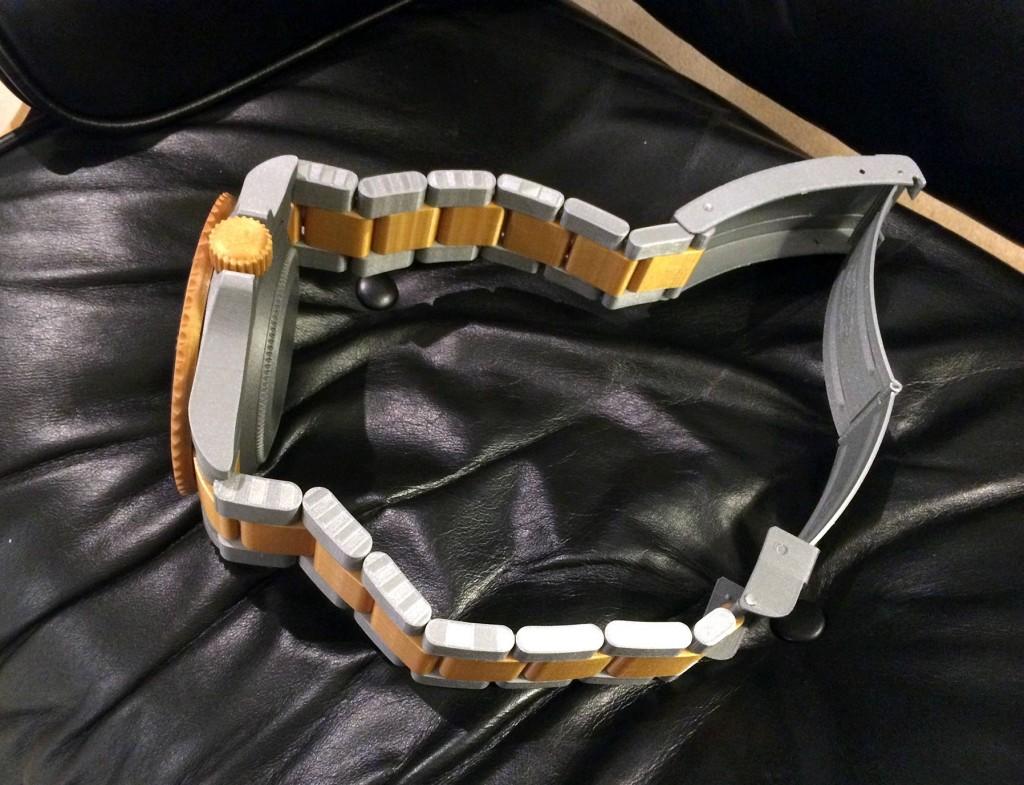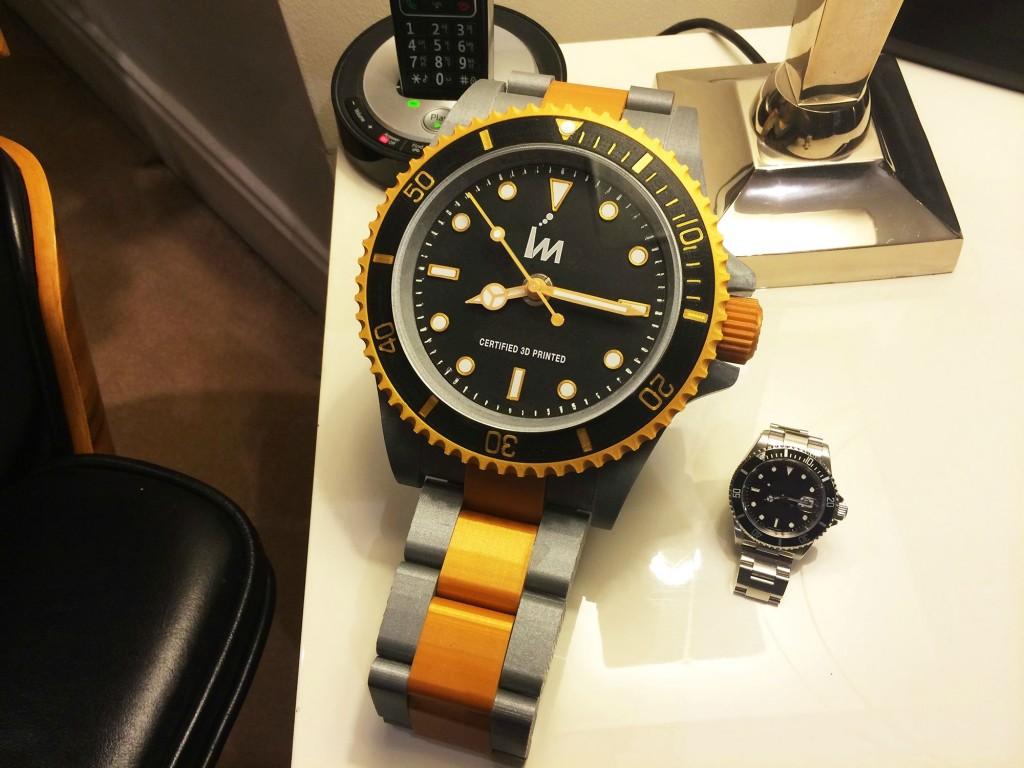 Franc Falco, a graphic designer and 3D modeler at My Mini Factory, has gone full boat with the Massive 3D Printed Diver’s Watch Clock. If you’ve got a nautical bent and a hankering for a challenge, with a big dose of patience thrown in, Falco thinks you’ll thoroughly enjoy the reward.
Franc Falco, a graphic designer and 3D modeler at My Mini Factory, has gone full boat with the Massive 3D Printed Diver’s Watch Clock. If you’ve got a nautical bent and a hankering for a challenge, with a big dose of patience thrown in, Falco thinks you’ll thoroughly enjoy the reward.
The 3D printed clock features 131 pieces and will take about 30 hours of printing time, so it’s a project you want to carve out a slot for. Expect to use about 50 meters of filament at 3mm, with the finished product weighing in at 400 grams. Falco printed the giant timepiece on a MakerBot Replicator 2 as well as an Ultimaker 2, using PLA, with the parts being printed in silver, gold, black, and white filament.
Along with a bit of 3D printing expertise for this project, you will need some other items, such as:
- Battery quartz clock movement

- Perspex/acrylic 100 mm disc, 3mm thick
- Scalpel
- Sandpaper
- Smoothing files
- Lengths of 3mm filament
- Super glue
- 3mm drill
- Correction fluid
Once all the parts are 3D printed, you’ll need to carefully lay them out and follow assembly instructions to piece together your final reward, beginning with putting together the clock back and then placing all the pieces to the clock’s ‘watchband’ or bracelet out in a straight line and super gluing them together. Falco makes sure to mention that you don’t want to glue the bracelet parts to the clock back as it is just meant to give direction for laying out the bracelet parts and aligning the main body, where the inner rings are glued next, one by one, with proper orientation.
The bezel outer ring and face are glued onto the watch body next. As you are bringing this part of the project together, this is where you will see whether or not the print quality and resolution of your 3D printer are up to par in this project. You will have to do some trimming, according to Falco. Once the bezel face is in place, the clock back is assembled and glued together and then positioned in the recess of the main body for the clock.
 The last step in the journey is in completing and assembling the 3D printed clock face, which has some of the more obvious intricate details used to tell time. Some sanding may be necessary, so it’s recommended to leave some of the supports in order to have grips. Correction fluid is used to fill in the white part of the logo and markings so that it stands out in white. With sanding to completely smooth everything, the face should be crisp so that the rest of the tiny pieces can be glued, almost finishing the look of the clock. Once the face is glued to the body, the last bit of complexity is to add the battery quartz clock movement fixed through the face and connected to the hands. The clasp is added, using filament or a dowel to connect all the links together.
The last step in the journey is in completing and assembling the 3D printed clock face, which has some of the more obvious intricate details used to tell time. Some sanding may be necessary, so it’s recommended to leave some of the supports in order to have grips. Correction fluid is used to fill in the white part of the logo and markings so that it stands out in white. With sanding to completely smooth everything, the face should be crisp so that the rest of the tiny pieces can be glued, almost finishing the look of the clock. Once the face is glued to the body, the last bit of complexity is to add the battery quartz clock movement fixed through the face and connected to the hands. The clasp is added, using filament or a dowel to connect all the links together.

Subscribe to Our Email Newsletter
Stay up-to-date on all the latest news from the 3D printing industry and receive information and offers from third party vendors.
You May Also Like
NSF Awards Kentucky $1M for Advanced Manufacturing
The National Science Foundation has awarded a $1 million grant to the University of Louisville for the Advancing Manufacturing and Building Construction Technologies (NSF AMT) project. This initiative is part...
3D Printing News Briefs, May 11, 2024: 3D Printed Stent, Tower, Sculptures, & More
We’re starting off with medical research in today’s 3D Printing News Briefs, as researchers in Korea used CT images and 3D printing to fabricate an educational simulator for a mastoidectomy....
3D Printing Unpeeled: Wind Turbines, Probiotics and Lenses
TPI Composites, ORNL and Ingersoll Rand are working to make wind turbine tooling segments that can be 18.3 meters long. These elements also include resistive wires that help keep the...
Tethon 3D Releases Cost-effective Bioprinter
Tethon 3D, known for its ceramic-loaded DLP materials, custom resins, and DLP 3D printers, has recently released a bioprinter. Vat polymerization printers like DLP systems have been widely used by...
































